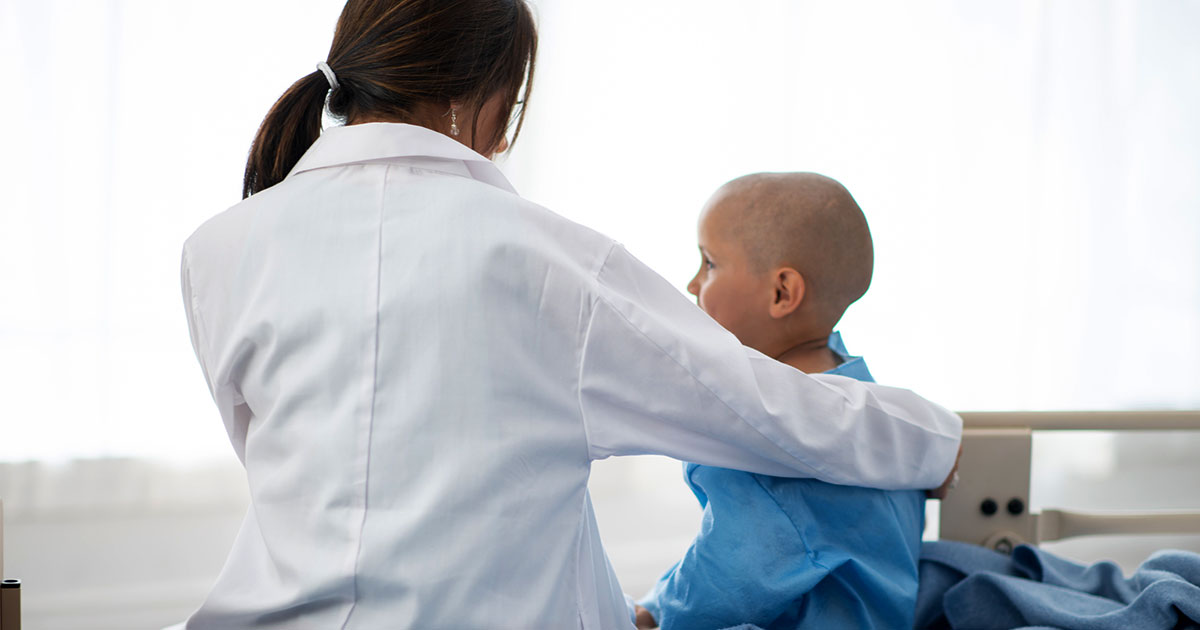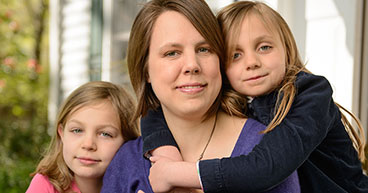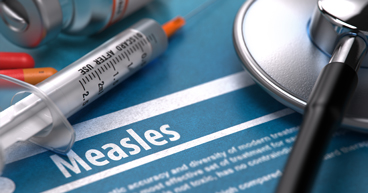
Finding out that a child has cancer can be overwhelming for both family and loved ones. But today, the vast majority of children with cancer survive it, in part because advances in pediatric cancer care have improved outcomes over the past few decades.
If a child in your family has been diagnosed with cancer or a blood disorder such as leukemia, you probably have a lot of questions. In this article, City of Hope® childhood cancer specialist Saro H. Armenian, D.O., M.P.H., provides insight into some of these vital topics, including:
- Why do children get cancer?
- Types of childhood cancer
- Screenings for childhood cancer risk factors
- What causes childhood cancer?
- Cancers in young adults
- Can children survive cancer?
If your child has recently been diagnosed with cancer or referred to a cancer specialist, you can talk to someone at City of Hope by calling us or chatting online with a member of our team.
Why do children get cancer?
Cancer is caused when the body stops controlling cell growth properly. Normally, when old cells die, the body creates new cells to replace them. When there are errors with this replication mechanism, the old cells keep growing, eventually forming a mass called a tumor. A few kinds of cancer, like leukemia and lymphoma, do not form tumors but can develop in the bloodstream, lymphatic system or other parts of the body.
Cancer is generally a disease that develops in old age, but it can also affect children. The average age of a cancer patient at diagnosis is 66. Of the nearly 2 million new cases diagnosed in the United States every year, only about 10,000 are children 14 years old or younger.
Cell replication errors that may lead to tumors are usually triggered by changes as our bodies age. Also, older people have decades of exposure to potential carcinogens or may have years of bad lifestyle habits behind them, increasing their risk.
So why do children and adolescents get cancer?
“In the overwhelming majority of cases, we do not know why children develop a cancer,” says Dr. Armenian, the Barron Hilton chair of City of Hope’s Department of Pediatrics. “This makes it especially challenging, because we are not able to think about preventive measures.”
Cancer experts are continuing to research the root causes. The goal of much of this research, Armenian adds, is to create “more aggressive, population-based preventive strategies.”
Though the causes of pediatric cancer are not fully understood, innovative approaches to care have helped reduce childhood cancer mortality rates by 70 percent over the past 50 years.
Types of childhood cancer
The most common childhood cancers are:
- Leukemias, which are cancers that affect blood cells. These include acute myeloid leukemia (AML) and acute lymphoblastic leukemia (ALL).
- Brain tumors and other tumors that develop in the central nervous system.
- Lymphoma, which affects the cells in the immune system. These can be found in places around the body, such as the bone marrow or lymph nodes.
Leukemia is the most diagnosed childhood cancer across all age ranges. It is also more common among kids aged 4 and under than among older children. Lymphoma is the most frequent cancer found in adolescents.
Any cancer type that affects adults may also affect children and adolescents, though some cancer subtypes may be more common in younger people.
Screenings for childhood cancer risk factors
Because scientists are not yet sure why some children develop cancer, there are no standard screenings. However, some very rare risk factors, such as certain inherited health conditions, can cause genetic disorders. If your child has one of these inherited conditions, their primary doctor will closely monitor their health and may recommend individual screening tests.
“Pediatricians are typically aware of the different screening tests that need to be performed,” says Armenian. “If a child has a particular syndrome—or a genetic mutation that puts them at risk of developing such a syndrome—and they develop additional symptoms, your doctor will do additional work-up.”
These syndromes account for fewer than 10 percent of all childhood cancer diagnoses.
One goal of childhood cancer research is to develop better screenings for genetic mutations like these, says Armenian, so that they can be added to the standard panel of tests performed on every newborn baby.
What causes childhood cancer?
Outside of the genetic syndromes mentioned above, childhood cancer risk factors are unknown. (A risk factor is something that increases the chances that a child will develop cancer.)
Those that we know about are extremely rare and include those listed below.
- Exposure to too much radiation. This can be from naturally occurring radiation, radiation caused by human activity like nuclear facilities or being exposed too often to X-rays.
- Previous chemotherapy treatment. Research has shown a link between the use of chemotherapy and the risk for developing cancer in the future.
While a tremendous amount of resources have been devoted to understanding the causes of pediatric cancer, “there hasn’t really been a consistent target for us to be able to link back to childhood cancer, and the association with these environmental exposures is very, very faint,” Armenian says.
Cancers in young adults
Cancer rates among adults under 50 years old have gone up drastically over the past few decades. Some of the more notable increases are in the numbers of testicular cancer, colorectal cancer and breast cancer diagnoses.
While this is partly the result of better and more frequent screening options for certain cancers, scientists believe this does not tell the full story. Researchers are continuing to investigate what factors may be behind these changes in cancer rates.
Can children survive cancer?
Survival rates for childhood cancer are very high, with around 90 percent of children receiving successful treatment, in most cases at a clinic dedicated to pediatric cancer care.
“When a child is diagnosed with cancer, it is devastating not just for the child, but for the family and the support system that takes care of that child,” says Armenian. “Our goal is to personalize all of our interactions with our patients and their families to ensure that not only are they receiving the highest level of care, but that they’re being supported through that journey in terms of physical and psychosocial support.”
Some of the key advances in childhood cancer treatment in recent years include:
- Molecular profiling, which refers to tests that doctors perform in order to better understand cancer on a genetic level. Understanding cancer’s genetics helps oncologists customize treatment for every patient.
- Less reliance on certain types of chemotherapy or radiation therapy, which can cause short- and long-term side effects.
- The introduction of immunotherapy options, which can more precisely target cancer in the body and have fewer side effects.
As well as personalized cancer care, “access to clinical trials provides children who sometimes have relapsed disease with options for curative therapy,” Armenian says.
At City of Hope, the Children, Adolescent and Young Adult Survivorship Program also offers access to follow-up care for survivors of childhood cancer, since it’s vital to consider the patient’s future health, Armenian says.
“We’re thinking beyond cure, we’re thinking about our patients not just on day one, but on day 1,000 and beyond,” he adds.
If you’ve been diagnosed with cancer and are interested in a second opinion on your diagnosis and treatment plan, call us or chat online with a member of our team.


